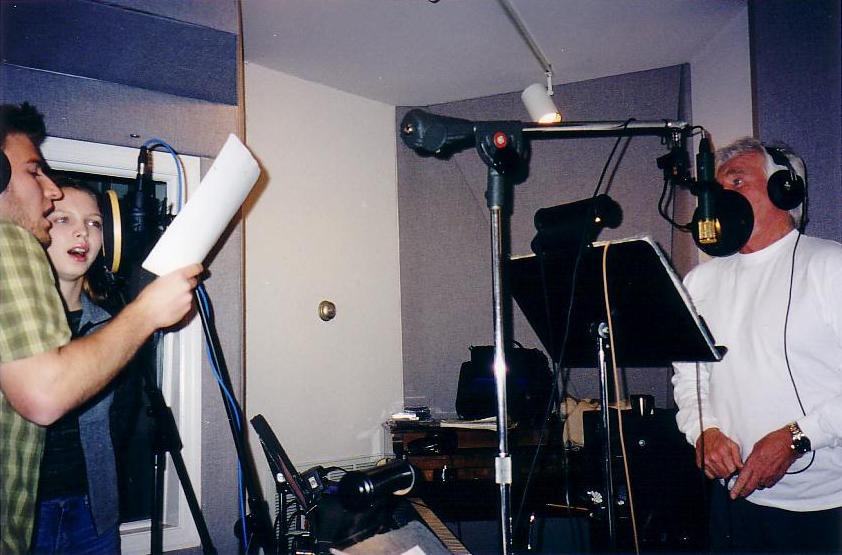The Anatomy of a Background Vocal Arrangement. Part 2, BGVs
This is a guest post by AirGigs artist Lydia Salnikova
BGVs, as in “background vocals”. It is actually a synonym of “harmonies” and those 2 terms can be used interchangeably, but for the purpose of this article I have chosen to separate them.
As discussed in detail in part 1, my general approach to developing background vocals involves creating a dynamic arrangement of tight harmony parts, which builds gradually throughout the song. By “harmony” here I mean a vocal part above or below the lead vocal, singing the same lyrics and matching its phrasing as closely as possible… Like a water ripple. But there are times or situations when a different type of background vocal arrangement, one that does not mimic the lead vocal as much, works better. Here are a few possible examples:
1. If the lead vocal melody moves up and down the scale a lot, background vocals might be more effective if they stay more constant in pitch. They may still follow the lead vocal’s phrasing, or they may sing different lyrics altogether, or they may opt for a nice ooh or aah.
2. If the desired effect is not so much supporting the lead vocal, but rather creating an additional dimension or color for the recording, oohs/aahs may work better. In that instance, background vocals almost take on the role of an ambient instrument such as a synth pad or B3 organ. Except they are, you know, human.
3. When we want the lead vocal to stay very much front and center, so that every tonal nuance, every inflection, every breath can be clearly heard, then adding harmonies too close around it might dilute the individuality of the performance too much.
4. If the subject matter of the song is very personal, very “just between you and me”, sometimes you might not want 3-part “crowd” harmonies adding extra weight and taking away from the intimacy. “Answers” might work better.
5. Hey there, what if I simply get a kick out of oohs and aahs and I like to have them on my record? As well as harmonies? For that “larger than life” sound? What’s wrong with that??? Nothing. Absolutely nothing.
So let’s explore our other options. I have to make a disclaimer that none of these are hard-and-fast rules. Nothing in music is. Still, some of these considerations might come into play when one chooses to try different strategies for background vocals that aren’t necessarily tight “harmonies”. Generally, in my session work anyway, the background vocal arrangement usually involves a combination of both approaches – harmonies AND other background vocals.
Combining the two can be effective even on a sparse production (once again, I am illustrating with short clips of some of my BGV work):
“Somewhere Else”, artist Paul McIntosh
But that technique really shines on full band tracks:
“Alive” by Phoebus
“Take My Breath Away”, artist Kaylyn Roberson
“Lost in the 70s”, artist Tim Daher
Now, if what we’re after is the effect of having a choir in the background, whether or not we actually have a choir or just one singer stacked multiple times, that choir can for the most part sing independently from the lead vocal. You may hear a “call and answer” approach, oohs/aahs, etc. This may happen, for example, on R&B style tracks:
“Love Again”, artist NoVanGogh / Gina Cano
And on contemporary country recordings, a background choir BGV arrangement may help infuse some of that R&B flavor:
“Bad Bad Girl”, artist Brady James
Background choir on classical recordings, while singing along with the soloist, may likewise follow an arrangement of its very own and build internal harmonies between all the voices.
“Pie Jesu”, artist Darko Zoric
When I record oohs/aahs or answer type BGVs, I often find it beneficial to double each individual background vocal part, to be able to then pan them left and right. That also helps fatten the sound in choir emulation situations, when I essentially act as a one-woman choir:
“Lord’s Prayer”, artist Darko Zoric
In wrapping up, for extra icing on the cake, here are a few more background vocal singing tricks that I’ll share with you. They may not apply to every project, but they definitely have their place and I often employ them in my work:
• Understate or even omit certain word endings. Especially if it’s a plosive or a sibilant that the lead vocal over-enunciates – you don’t want to place additional emphasis on it. Or have to play catch with that last “s” on “he-e-ea-a-a-arts” that the lead vocal holds out and risk having multiple “s” endings audible on the recording.
• If a line has a few “pick up” words that happen before the main downbeat, consider skipping them and coming in on the downbeat.
• Even in the most powerful chorus of the song, you may want to drop out on lines where the lead vocal does an ad lib or an elaborate vocal lick, to help draw attention to it. Remember, your #1 job is to help present in the best possible light the jewel that is the lead vocal!
So this is it for this edition. Hope you enjoyed reading it. And if you ever want to sing in harmony with me, hit me up at the gig below:
FEMALE BACKGROUND/BACKING VOCALS BY GRAMMY NOMINEE
Or check out my other gigs as well:
FEMALE VOCALS BY GRAMMY NOMINEE
PIANO / VOCAL RECORDING OF YOUR SONG
Ciao!

